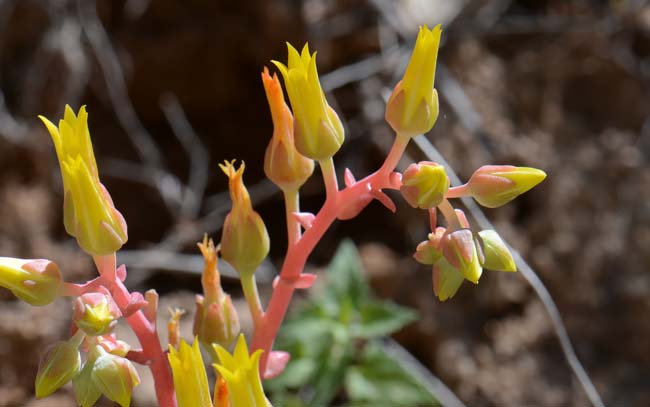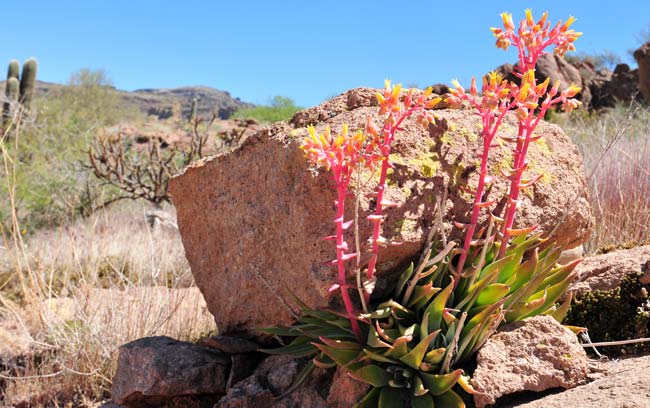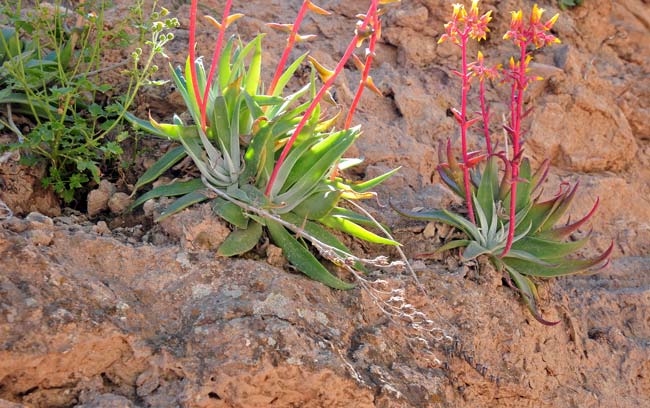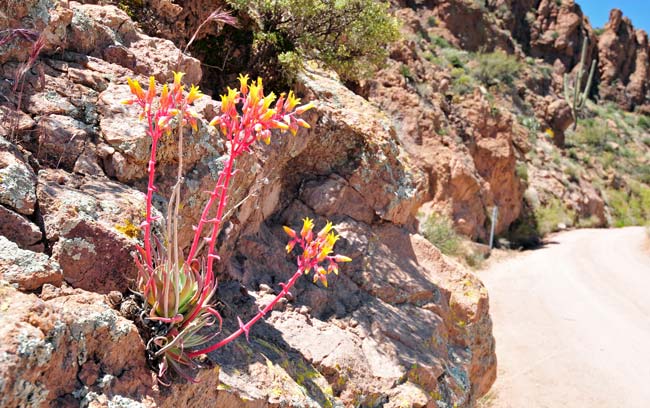Dudleya collomiae saxosa, Gila County Live-forever




Scientific Name: Dudleya collomiae saxosa
Common Name: Gila County Live-forever
Also Called: Panamint Liveforever, Rock Echeveria
Family: Crassulaceae, Live Forever Family
Synonyms: (Dudleya saxosa, Echeveria collomae and Echeveria collomiae)
Status: Native
Duration: Perennial
Size: Up to 1 foot, flowering heads up to 3 feet but usually much shorter.
Growth Form: Forb/herb; basal rosette, fleshy succulent leaves, erect stems provide flowering inflorescence.
Leaves: Green, powdery green; glabrous, fleshy, leave blades up to 5 inches or more in length and ¼ inch thick,
Flower Color: Yellow, bright yellow; red tinged; showy flowers with 5 petals and 5 sepals on upright pink, red or orange inflorescence which may reach 3 feet tall, modified leaves or bracts on inflorescence, flowers tubular.
Flowering Season: March to May.
Elevation: 2,000 to 6,000 feet.
Habitat Preferences: Rocky slopes, canyons, crevices and Sonoran Desert Sky Islands.
Recorded Range: A rare plant in the United States where Dudleya collomiae saxosa is found only in Arizona where it is found in the central, southern and northwest parts of the state.
North America & US County Distribution Map for Dudleya collomiae saxosa.
U.S. Weed Information: No information available.
Invasive/Noxious Weed Information: No information available.
Wetland Indicator: No information available.
Threatened/Endangered Information: The state of Arizona has listed Dudleya saxosa ssp. collomiae, Rock Echeveria, as Salvage Restricted.
Comments: In Arizona, Gila County Live-forever is typically found in rocky crags, steep cliffs and sharp out-cropping’s. Although rare in the United States Gila County Live-forever is common where found primarily in central Arizona.
The type species is from Payson, Gila County, Arizona so named in 1924. This is a typical succulent plant that uses its fleshy leaves to store water to maintain long periods under arid conditions. This plant makes a good landscape species under proper conditions by purchases should be restricted to legitimate nurseries that do not remove native plants. Care should be taken to insure sufficient drainage.
The genus Dudley is so named to honor William Russell Dudley. Dr. Dudley was the first head of the Botany Department at Stanford University.

